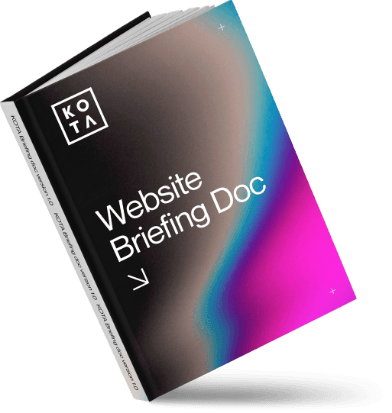What to do with underperforming content

Content decay isn’t a dirty word. Every brand with a blog has posts that underperform. Maybe they were never optimised properly. Maybe they’re outdated. Maybe they never had a chance.
But in 2025, with AI-generated answers creeping into every search and Google tightening its grip on quality and intent, underperforming content doesn’t just sit there doing nothing.
It drags your entire site down.
So if you haven’t audited your blog in a while, or you’re sitting on hundreds of posts that haven’t seen traffic in months (or years), now’s the time to act.
Why underperforming content is more dangerous now than it used to be
You might think: so what if an old blog isn’t getting clicks? It’s harmless, right?
Not quite.
Here’s what outdated, thin or irrelevant blog content can do:
- Weaken your site’s topical authority. Google now evaluates your content as part of a whole—so a bloated, low-quality blog can dilute your expertise signals.
- Wreck your crawl budget. Especially for larger sites, Google will deprioritise or waste time crawling deadweight content instead of your valuable new pages.
- Tank your UX and trust signals. If users land on weak blog posts, they bounce. If they bounce, your behavioural metrics (time on site, pages/session) suffer. And that affects rankings.
- Reduce your chances of visibility in AI-generated answers. Large Language Models (LLMs) rely on structured, reliable, trustworthy content. If your site is filled with outdated waffle, you’re less likely to get picked up in AI snapshots and SGE results.
So yes, that blog from 2018 titled “5 Social Media Trends to Watch” could be quietly wrecking your SEO.
Step 1: Identify your content underperformers
Not all low-traffic posts are bad—but some are dragging you down. Here’s how to find them.
Use Google Search Console:
Go to Search Results > Pages > Filter by Clicks: Less than 10. This shows you content that’s getting almost no engagement.
Check indexation status:
Go to Pages > Why pages aren’t indexed. If blogs are showing up under “Crawled – currently not indexed,” Google’s already decided they’re not worth surfacing.
Look for low-quality signals:
- High bounce rate or low time on page in GA4
- Thin content (less than 300–500 words)
- Zero internal links from other posts or pages
- No backlinks, no impressions, no engagement
Bonus: Run a site crawl with Semrush or Screaming Frog to flag duplicate content, broken links, or outdated metadata across your blog.
Step 2: Diagnose the why
Once you’ve pulled your list of laggards, it’s time to get forensic.
Ask:
Was this ever ranking for anything?
If it used to perform but dropped off, you might be dealing with content decay.
Is it helpful?
Some old content was created just to “have a blog.” Be honest about whether it serves anyone today.
Does it match the current search intent?
A blog targeting “best email tools” in 2020 might need a complete overhaul in 2025.
Is it optimised for Featured Snippets or AI Search?
Structured content, clear headings, FAQ schema and concise definitions are super helpful now.
Step 3: Decide what to do with each blog
Now comes the triage.
Option A: Refresh it
Still useful, but outdated or stale? Breathe new life into it.
Do this if:
- It’s ranking on page 2 or 3 (you’re close!)
- It covers a relevant topic, but could be improved
- It’s bringing in some traffic, but not converting
How to refresh:
- Update stats, links and references to reflect 2025
- Improve internal linking (to and from this post)
- Rewrite the intro and H1 to better match current search intent
- Add EEAT signals: expert quotes, first-person insights, author bios, FAQs
- Optimise for AI visibility: use lists, Q&A formats, clearer structure
Option B: Consolidate it
Too similar to another post? Combine and conquer.
Do this if:
- You have 2–3 posts cannibalising the same keywords
- One performs better than the others
- The topic deserves a more in-depth treatment
How to consolidate:
- Choose the best-performing post as your primary
- Merge useful info from the others into it
- Redirect the weaker posts to the primary using 301 redirects
- Clean up internal links to point to the new URL
Option C: Remove or deindex it
Sometimes, content is just not worth saving.
Do this if:
- It has no traffic, no rankings, no links, and no strategic value
- It targets irrelevant or outdated topics
- It’s so off-brand or poor-quality it hurts your credibility
How to remove safely:
- Use a 410 status to signal “gone” if no replacement exists
- Or redirect to the most relevant existing page
- Update your sitemap and internal links accordingly
Step 4: Build in a process so it doesn’t happen again
Once you’ve done the cleanup, futureproof your blog strategy.
Here’s what smart marketers are doing in 2025:
- Quarterly content audits: Review rankings, traffic, and freshness every 3 months
- AI-readiness checks: Make sure your content is structured and helpful enough to be picked up by SGE and ChatGPT-style assistants
- Performance-based publishing: Don’t just blog because it’s Tuesday—use keyword intent, competitive gaps, and internal linking plans to inform each piece
- Content briefs with EEAT built in: Make sure writers include sources, experience, and credibility cues in every blog
TL;DR – Not all content is good content
Underperforming content doesn’t just sit in the background. In 2025, they:
- Slow down your crawl efficiency
- Damage your authority
- Confuse search intent signals
- Undermine your AI search visibility
Cleaning them up isn’t busywork. It’s foundational to staying visible, competitive, and trusted online.
Interested in working with KOTA?
Drop us a line at
hello@kota.co.uk
We are a Creative Digital Agency based in Clerkenwell London, specialising in Creative Web Design, Web Development, Branding and Digital Marketing.






